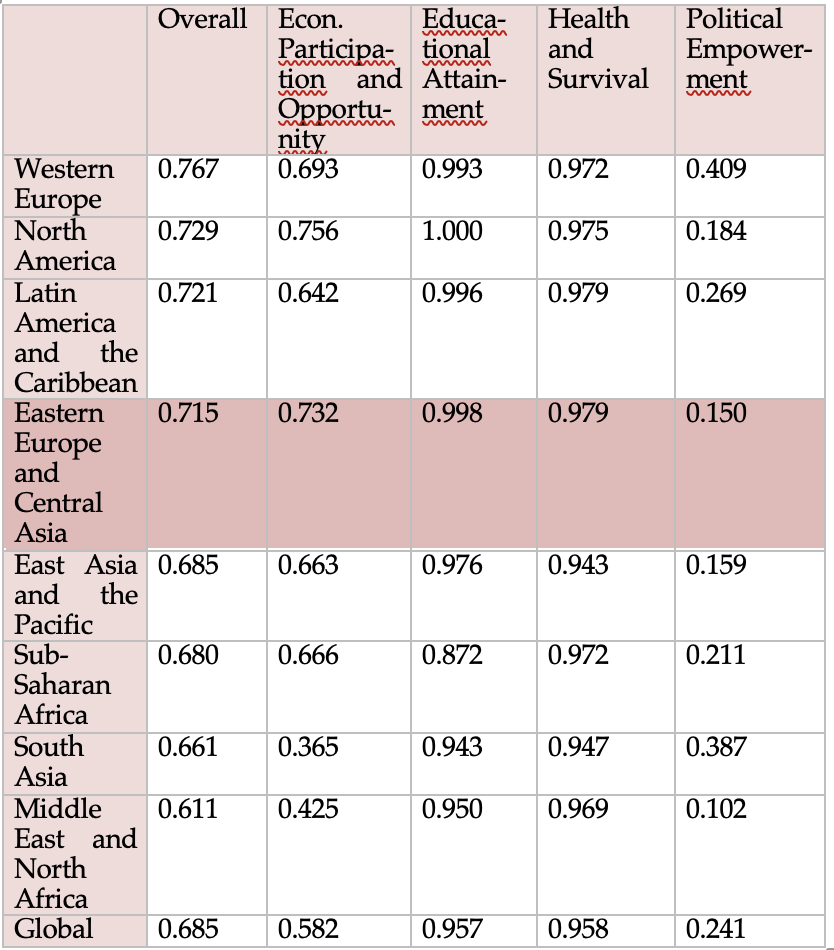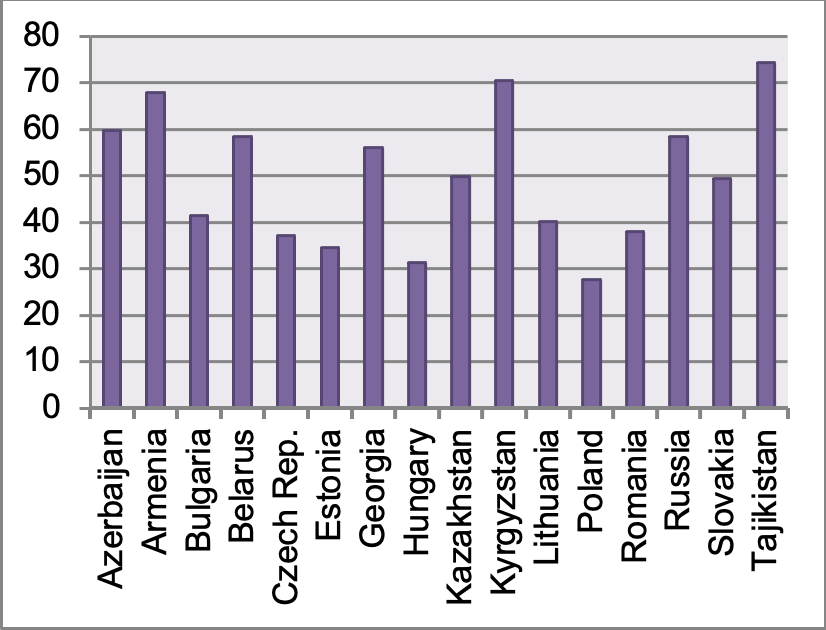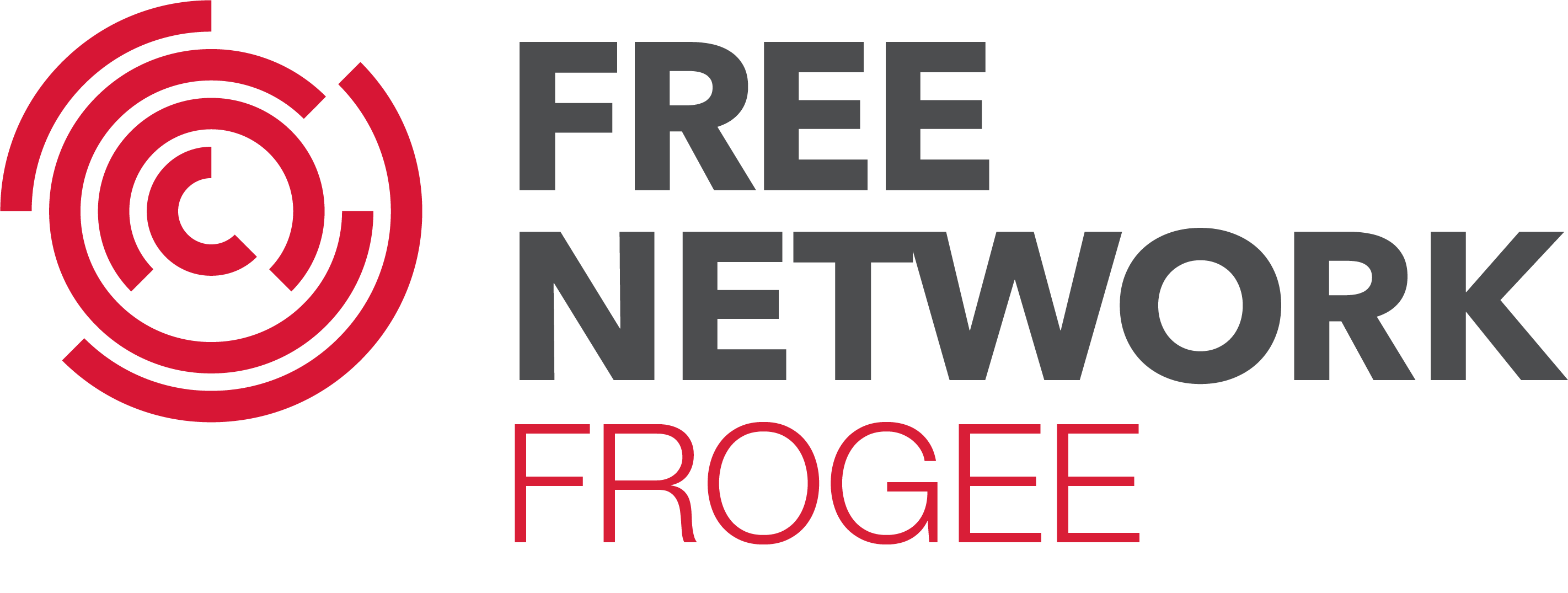Women in politics: Why are they under-represented?
Why are there few women in politics?
Women are generally under-represented in political offices worldwide, and their under-representation becomes larger in more senior positions. Of the four dimensions considered in the World Economic Forum’s Gender Equality Index (namely, Economic Opportunity and Participation, Educational Attainment, Health and Survival and Political Empowerment), the dimension called Political Empowerment, which measures the extent to which women are represented in political office, records the poorest performance, with only 25% of an hypothetical 100% gap having been closed to date.
Importantly, although there is large variation across countries, gender inequality in political empowerment is documented in every region worldwide, including in those countries that are most socially and economically advanced. Sweden, for instance, while having a good record of women’s representation in most institutions (women currently represent 47.5% of the Parliament members, 54.5% of the ministers, and about 43% of the municipal councillors), has never had a woman as Prime minister, and only one third of its mayors are female. Countries in Eastern Europe and Central Asia have only closed 15% of an hypothetical 100% gender gap in political empowerment, according to the World Economic Forum, by far their worst performance among the four sub-indexes that compose the overall Gender Equality Index.
Given the persistent under-representation of women in political institutions, where important decisions that shape societies are taken, economists and political scientists, among others, are increasingly interested in understanding the causes of the gender gap in political representation. In this brief I summarize some of the recent academic literature on this question, and I review some policies that may help closing the gender gaps in political representation.
Table 1. World Economic Forum Gender Equality Index. Regional Performance in 2020, by Sub-index

Note: The Global Gender Equality Index tracks countries’ progress towards reaching gender equality in educational and health attainment as well as in economic and political life. The overall score is an unweighted average of these four sub-dimensions. A score of 1 corresponds to perfect equality; by contrast, the closer to 0 the score, the larger the gender gap in the respective dimension. The regional average for Eastern Europe and Central Asia is calculated based on the individual scores of the 26 countries as listed in Figure 2. This Table is the authors’ own rendering of data taken from the World Economic Forum’s Global Gender Gap Report 2020 (WEF, 2019 p.22).
Why are women under-represented in political office?
Broadly speaking, three main reasons are most often explored, namely women’s unwillingness to become politicians, voters’ bias, and parties’ bias. Below I provide an overview of some of the work that has addressed each of these three factors.
Gender gaps in political ambition
Large-scale surveys have documented that women who, based on their professional and economic credentials, are potential political candidates, report lower ambition to occupy executive offices than comparable men (Fox and Lawless, 2004). The main reasons for the gender gap in ambition appear to be that (a) women are less encouraged to run for office than men and (b) women are less likely to believe that they are qualified for office than men.
Women’s tendency to shy away from competition (Niederle and Vesterlund, 2007) may also play a role, since the political selection process is likely perceived as highly competitive. As Preece and Stoddard (2015) find by using two experiments, priming individuals to consider the competitive nature of politics lowers women’s interest in running for political office, whereas it has no effect on the interest of men.
Women’s willingness to advance in their political career can also be influenced by family and relational considerations. Recent work from Folke and Rickne (2020) shows that in Sweden female politicians who are promoted to mayor (i.e. the highest office in municipal politics) experience a significant increase in the likelihood of divorcing their partner, whereas this is not the case for men. If women face higher costs for their career achievements, as the evidence in Folke and Rickne (2020) suggests, they may be discouraged from pursuing such objectives.
While there is evidence that women may on average be less willing to advance to top positions than men, it is not clear how quantitatively relevant this factor is to account for the lack of women in power. The introduction of gender quotas in candidate lists in different countries worldwide can be informative in this sense. If women’s under-representation in electoral lists is mostly due to the lack of qualified female politicians, some electoral lists (in most cases representing specific political parties) may not be able to run due to the introduction of a quota, and the average “quality” of lists, measured by some relevant (to voters) characteristics of their members, would decrease. The literature finds no evidence of either of these two responses to quotas (see Baltrunaite et al., 2014, Besley et al., 2017, Bagues and Campa, 2020). On the contrary, in Italy (Baltrunaite et al., 2014) and Sweden (Besley et al., 2017) quotas appear to have improved the “quality” of the elected politicians.
Voters’ bias
Krook (2018) observes that the existing work in political science regarding the importance of voters’ bias in explaining women’s underrepresentation in politics leads to ambivalent conclusions. Results in the most recent economics literature confirm this assessment. Barbanchon and Sauvagnat (2019) compare votes received by the same female candidate in French parliamentary elections across different polling stations within an electoral district and find that votes for women are lower in municipalities with more traditional gender-role attitudes. They interpret this pattern as evidence of voters’ discrimination and conclude that voters’ bias matters quantitatively in explaining women’s under-representation among politicians. Conversely, Bagues and Campa (2020) find no evidence of voters bias against women, based on voters' reaction to the introduction of a gender quota for electoral lists in Spain. Specifically, they study how the quota impacts the electoral performance of lists that were more affected by the quota – i.e. that were forced to increase their share of female candidates by a larger extent, due to their lower level of feminization pre-quota. They do not find evidence that such lists have worsened their relative electoral performance due to the quota. Put differently, there is no evidence that voters lower their electoral support of a list when its share of female candidates increases for exogenous reasons.
Survey data on voters’ attitudes can also help in gauging the extent to which voters discriminate against women. Based on data from the latest wave of the World Value Survey (WVS, 2017-2020), in Western Europe typically less than 20% of survey respondents express agreement with the statement “Men make better political leaders than women do” (e.g. 5% in Sweden, 9% in Denmark and Germany, 12% in Finland and France, 19% in Italy; only in Greece the share of agreement is higher than 20%, at 26%). As shown in Figure 1, these percentages are substantially higher in Eastern Europe and Central Asia.).
Figure 1. Share of survey respondents who report to “Agree” or “Strongly Agree” with the statement “Men make better political leaders than women do”.

Notes: Data are based on the latest wave of the World Value Survey, 2017-2020. The countries selected were either part of the former Soviet Union or under direct Soviet influence before 1990.
It bears noting, however, that answers to the WVS are not always informative about the extent to which voters’ bias prevails in a country. Where the percentage of respondents who think that men make better political leaders than women is close to or above 50%, as e.g. in Armenia, Georgia or Russia, voters’ bias is likely to be an important factor. However, in countries with lower levels of agreement, such as for instance Poland, drawing conclusions is harder, since the WVS does not measure the share of respondents who think that women make better political leaders than men do.
Parties’ bias
Party leaders, who often are key players in the selection of politicians, may prefer to promote male rather than female candidates. If they are aware of voters’ bias against women, preferring male candidates is consistent with a votes-maximizing strategy. However, party leaders may also act as gate-keepers and hold women back even in absence of voters’ bias. Esteve-Volart and Bagues (2012) find evidence of an agency problem between voters and parties by looking at Spanish elections. While parties tend to nominate women in worse positions on the ballot, there is no evidence that women attract fewer votes than men; moreover, when the competition is stiffer, women’s position on the ballot improves. These two facts lead the authors to conclude that the disadvantage women face can likely be attributed to parties' rather than voters’ bias.
When considering all these factors, it is also important to note that the systematic under-representation of women in political institutions is likely self-reinforcing, due to gendered group dynamics. In the laboratory, women in male-majority teams appear significantly less likely to put their name forward as team-leaders than women in female-majority teams; they anticipate, correctly, lower support from team members (see Born et al., 2019). Female mayors in Italy are significantly more likely to be removed by their municipal councils than their comparable male colleagues; importantly, this is especially true when the share of male councillors is particularly large (Gagliarducci and Paserman, 2011). These studies suggest that, since the political arena has been historically male-dominated, gendered group dynamics can create vicious cycles of women’s under-representation.
Which policies can be used to increase women’s representation in political institutions?
Different policies can be considered to address the various factors accounting for women’s under-representation in politics. In an attempt to address the ``supply side’’ aspect of women’s under-representation, various non-profit organizations have offered training programs aimed at providing women with knowledge, skills and networks to build political careers (see, for instance, NDI 2013). While reviewing the existing literature on these programs is beyond the scope of this brief, to the best of my knowledge there is little to no research-based evidence on the quantitative impact of training on women’s advancements in politics. Non-profit organizations, political parties and researchers may fruitfully collaborate to implement and systematically test training programs.
Gender quotas are the most commonly used policy intervention, especially those regulating the composition of candidate lists, and they have been extensively studied; overall the literature suggests that quotas are more or less effective in empowering women depending on their design and the context where they are used (see Campa and Hauser, 2020 for a more comprehensive review of the economics literature on gender quotas and related policy implications). Given the nuances in the functioning of quotas, countries or regions that consider their adoption should consult with experts who know the ins and outs of such policies and combine their expertise with local knowledge of the relevant context.
The structure and distribution of power within parties is likely crucial for improving women’s political representation. Some scholars have devoted attention to the role of women’s organizations within parties. Theoretically such organizations should favour the creation of networks and offer mentorship services, which are likely crucial to climb the career ladder in politics. In Sweden, a coalition of women from both the right and the left is credited for having pressed the Social Democrats’ into adopting their internal zipper quota by threatening to form a feminist party (see Besley et al., 2017). Women's wings within political parties could play a similar role. Kantola (2018) notes that women’s organizations seem to be currently deemed as outdated, at least in European parties; Childs and Kittilson (2016), on the other hand, find that their presence does not seem to harm women’s promotion to executive roles within parties, a concern that has been associated with the existence of such organizations. In countries with public funding of political parties, specific funds could be directed to women’s organizations within parties.
Folke and Rickne (2020) also note that, since women in top jobs appear to face more relational and family constraints than men, policies that improve the distribution of economic roles within
couples could help address the under-representation of women in positions of political power; their observation underlines the crucial role of gender-role attitudes in affecting women’s empowerment in any area of society. How can these attitudes change? An increasing amount of research is being devoted to answer this question. Campa and Serafinelli (2019), for instance, show that a politico-economic regime that puts emphasis on women’s inclusion in the labor market can change some of these attitudes. More research from different contexts and on specific policies will hopefully provide more guidance for policy makers on this important aspect, but the message from the existing research is that gender-role attitudes can be changed, and therefore policy-makers should devote attention to interventions that can influence the formation of such attitudes.
In many Western democracies the rate of progress in women’s access to top political positions has proven especially slow. This history of Western democracies and the existence of the self-reinforcing mechanisms described above can serve as a lesson for countries in transitions, where new political organizations and institutions are emerging. In absence of specific policies that address women’s under-representation at lower levels very early on, it would likely take a very long time before gender gaps are closed at higher levels of the political hierarchy.
In concluding, I observe that constant monitoring of the gender gaps in political institutions is important, even in presence of clear upward trends, since progress is rarely linear and therefore needs continuous nurturing.
Disclaimer: Opinions expressed in policy briefs and other publications are those of the authors; they do not necessarily reflect those of SITE, the FREE Network and its research institutes.
Country report
Read or download the policy brief in:
Belarus country report (EN)
Belarussian language version (BY)
Georgia country report (EN)
Georgian language version (GE)
Latvia country report (EN)
Latvian language version (LV)
Poland country report (EN)
Polish language version (PL)
Russia country report (EN)
Russian language version (in progress) (RU)
Ukraine country report (EN)
Ukrainian language version (UA)





